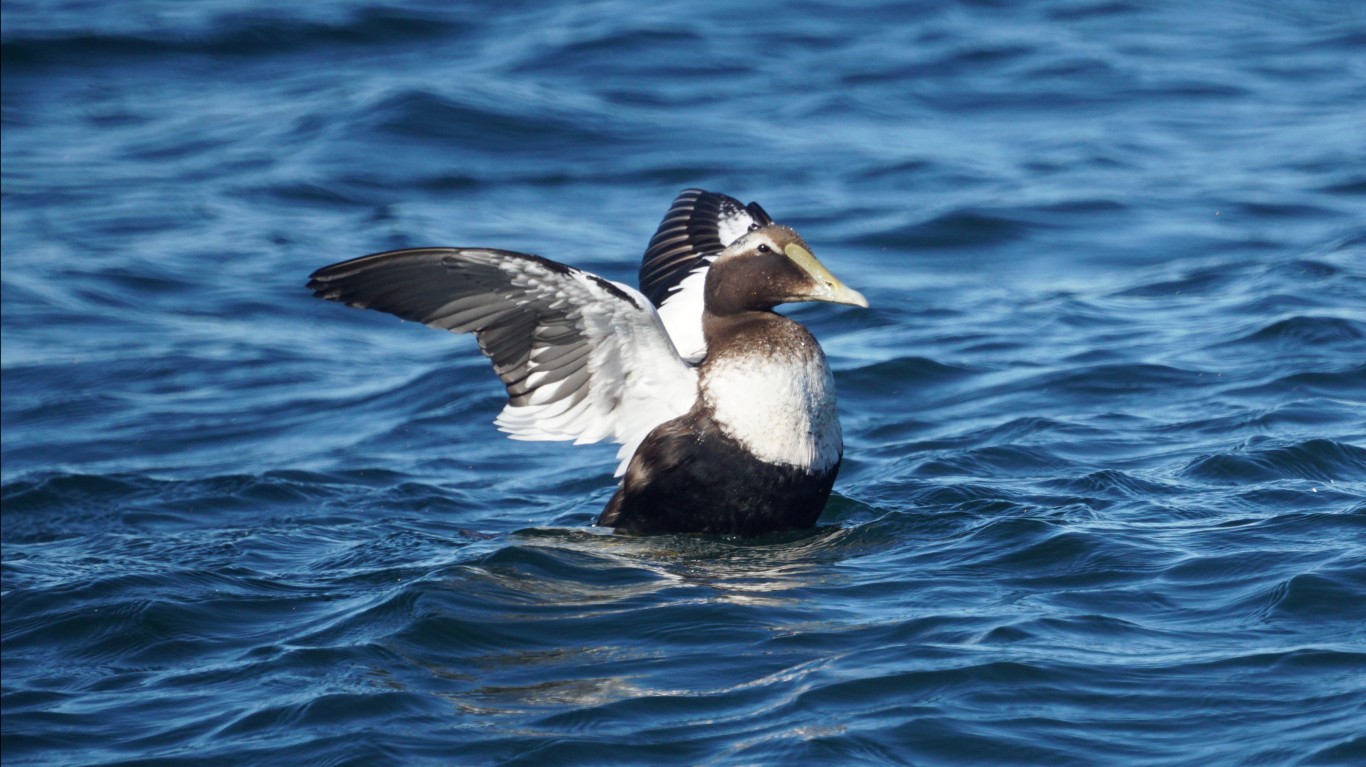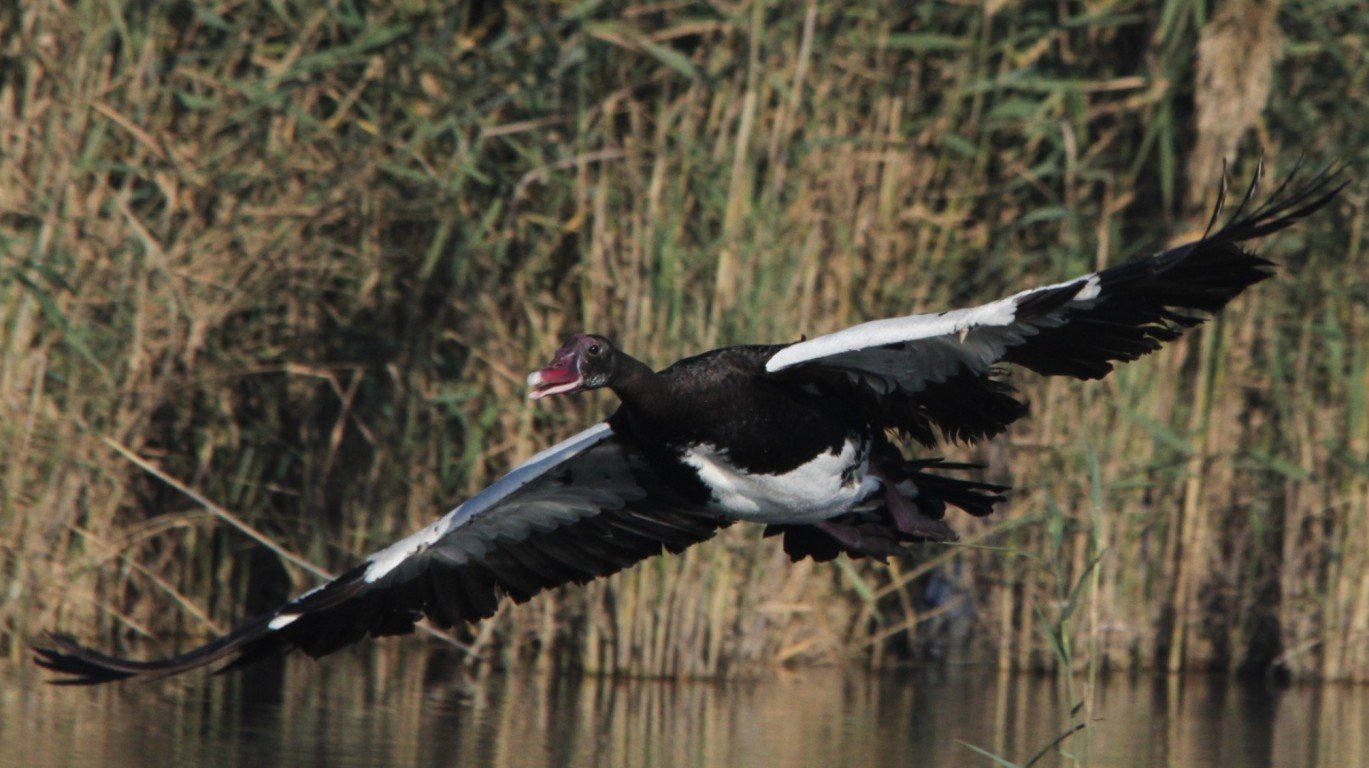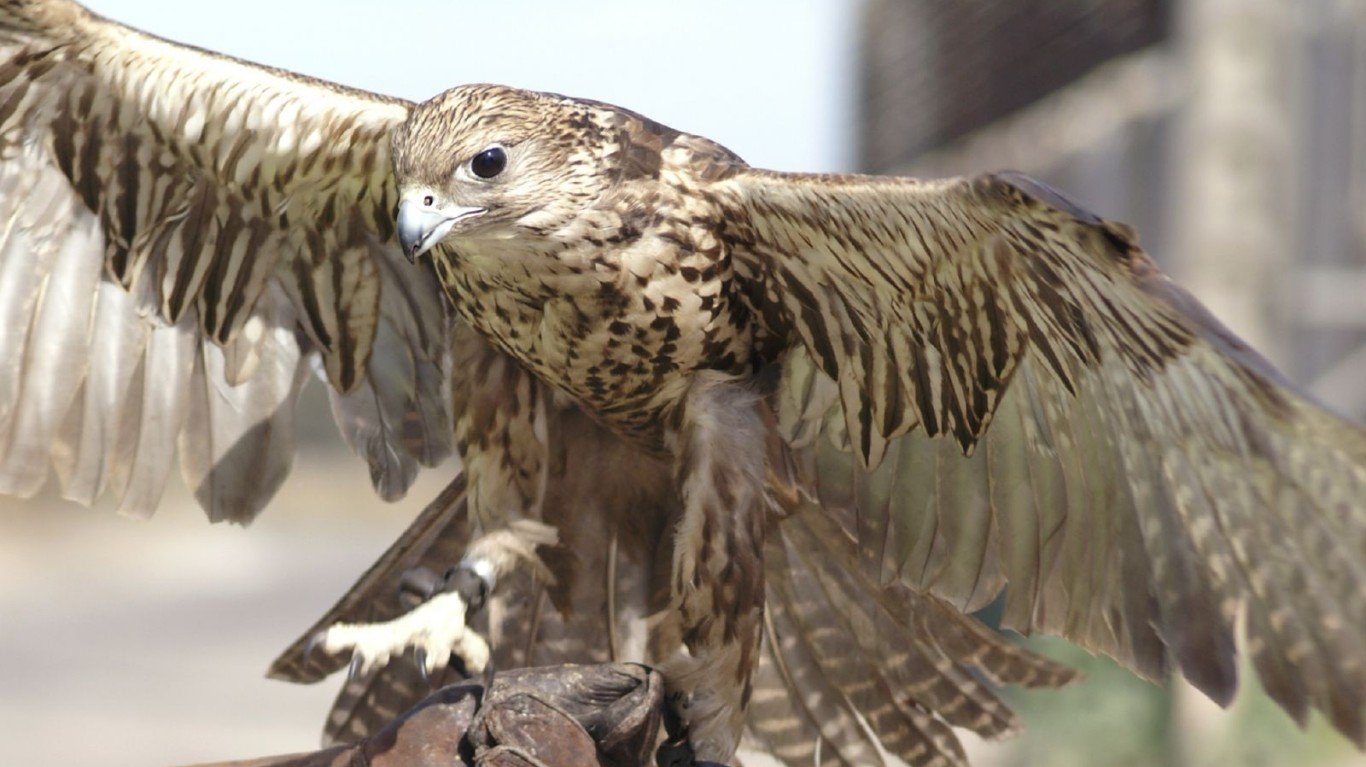In the vast and diverse animal kingdom, there are many fascinating creatures that possess remarkable speed and agility. The fastest animal on land is the cheetah, which can run at speeds of around 70 miles per hour. The fastest fish ever recorded is the Indo-Pacific sailfish, which has been clocked at 68 miles per hour – but measuring the speed of fish is tricky because of the effects of water resistance. Those speeds pale, however, in comparison to the velocity obtained by animals who fly – by birds and bats. (For landbound creatures, with one bat thrown in, these are the fastest animals in the world.)
To compile a list of the fastest birds on earth, 24/7 Tempo reviewed sources including LiveScience.com, speedofanimals.com, ourendangeredworld.com, and the Journal of Experimental Biology. Information on primary location and extinction risk comes from the International Union for Conservation of Nature and Natural Resources Red List.
In the skies above us, no bird is faster than the peregrine falcon, which can achieve a blistering 220 miles per hour when diving for prey. Its cousins the saker falcon and golden eagle are nearly as fast, plummeting at speeds up to 200 miles per hour. Remarkably, their speed is matched in level flight by the white-throated needletail (or spine-tailed) swift. (Two bird species are also among the 50 longest-living animals in the world.)
Birds of prey are noted not only for their speed, but for their agility, enabling them to turn quickly and reverse direction in order to pursue their airborne targets – and they tend to have excellent eyesight (hence the phrase “eagle eye”), enabling them to spot small animals on the ground before swooping down to claim them.
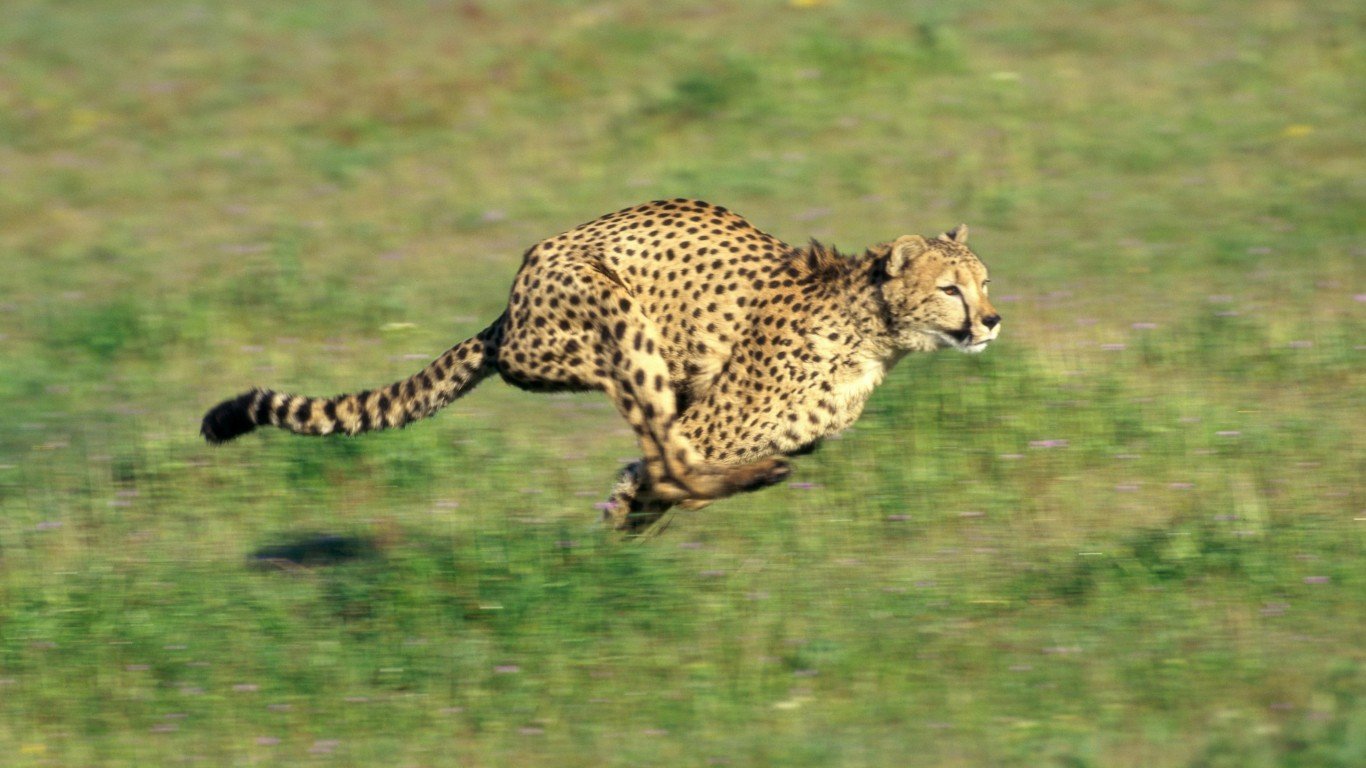
Cheetah
> Speed: Up to 70 mph
> Primary location: Northern, eastern and southern Africa, with a small population in Iran in
>Red List extinction risk: Vulnerable
The Cheetah is native to Africa and parts of Iran. Renowned for its incredible speed, the cheetah has a slender body, distinctive black tear marks on its face, and a golden coat adorned with black spots. It is the fastest land animal, capable of reaching speeds up to 70 mph (113 km/h) in short bursts. Cheetahs primarily prey on small to medium-sized ungulates like gazelles. With a unique hunting strategy, they use their incredible acceleration and agility to chase down their prey.
Common eider
> Speed: Up to 76 mph
> Primary location: Northern coastal regions of North America and Europe
>Red List extinction risk: Near threatened
The common eider is a large sea duck known for its distinct appearance: The male eider has striking black-and-white plumage with a green nape; the female has more subdued brown feathers. Eiders feed on mollusks, crustaceans, and other marine organisms. The bird is renowned for its valuable down, which is used in the production of high-quality insulation.
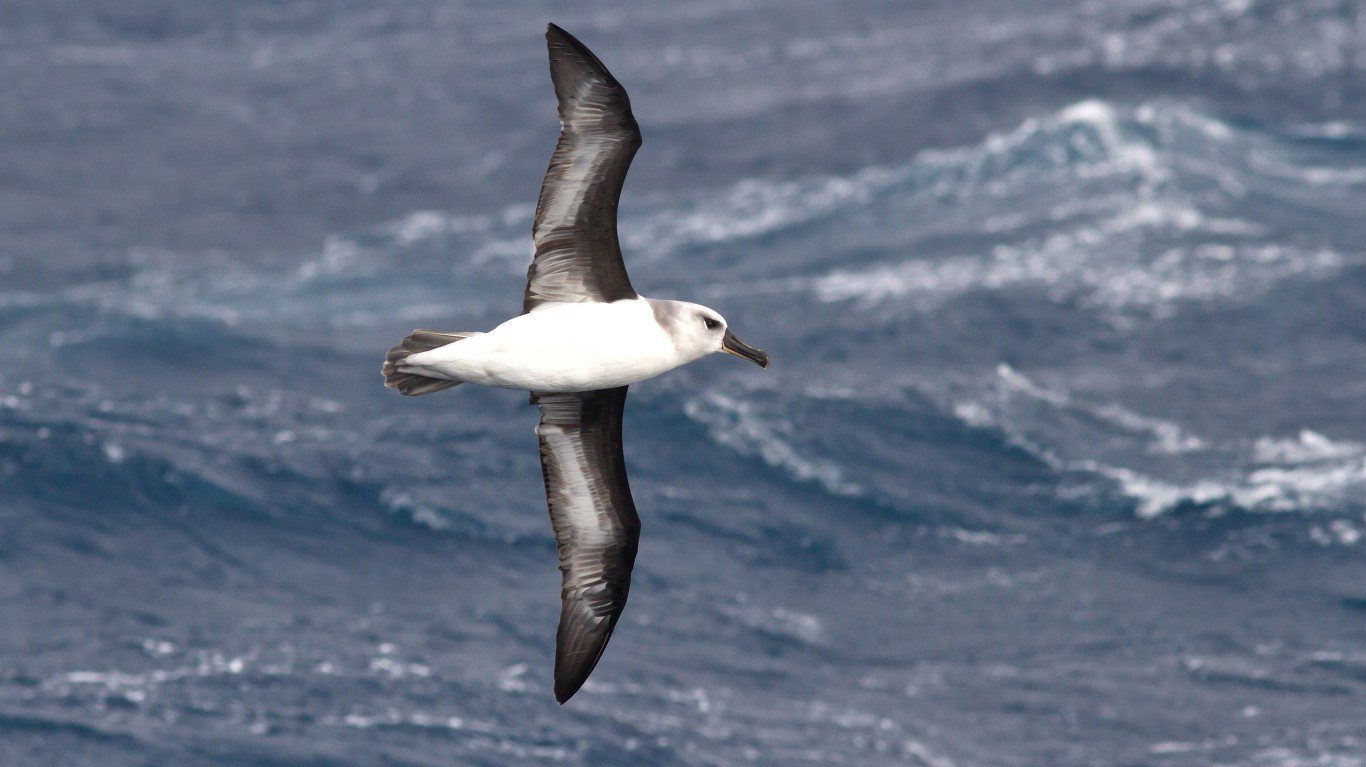
Gray-headed albatross
> Speed: Up to 80 mph
> Primary location: Southern South America, Australia, New Zealand, Antarctica
>Red List extinction risk: Endangered
The gray-headed albatross is a seabird that stands out from its counterparts for its large wingspan and gray plumage (the gray coloration on its head and neck gives it its name). It is a skilled flier, using the ocean winds to soar effortlessly for hours, and an expert fishermen, diving deep into the water to catch fish and squid.
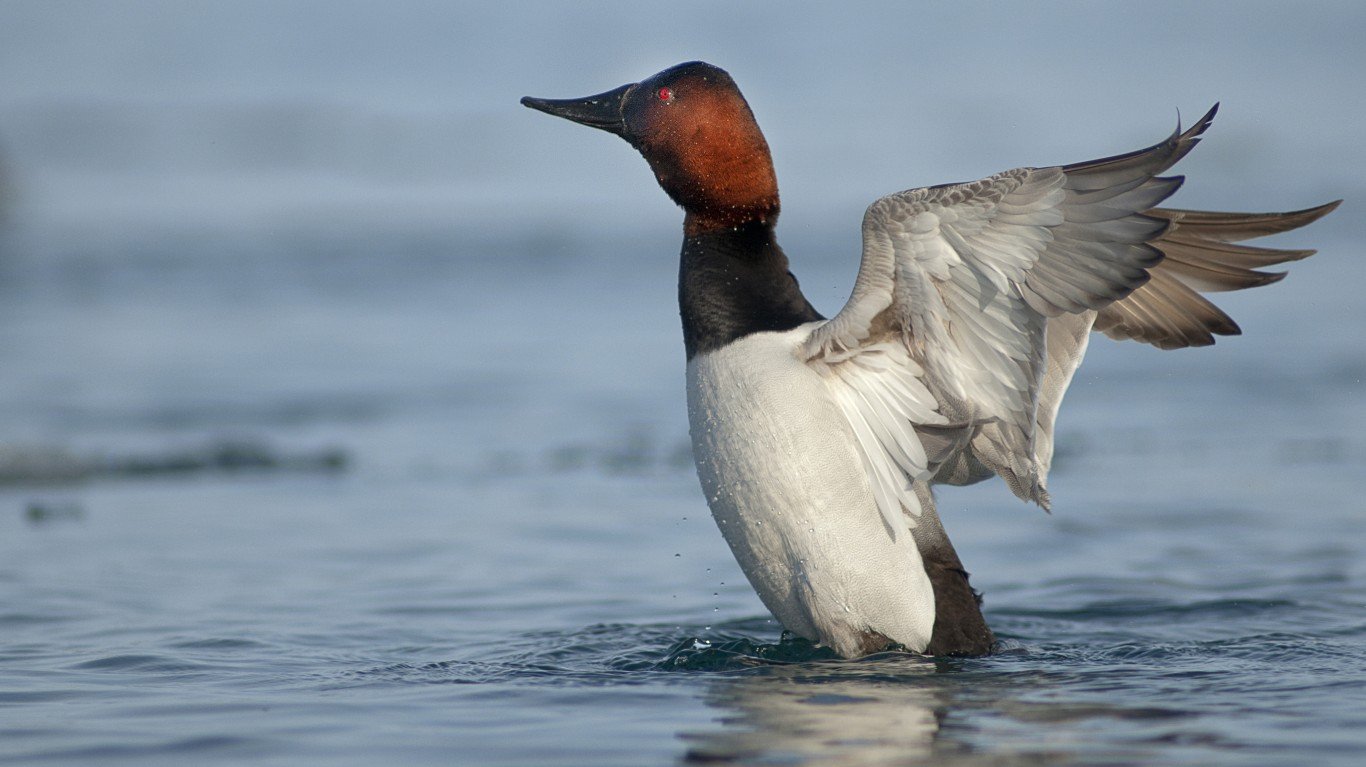
Canvasback
> Speed: Up to 80 mph
> Primary location: North America
>Red List extinction risk: Least concern
The canvasback is a duck named for the color of its back, thought by early observers to resemble that of canvas sails. The male also sports a striking red head and neck and a black chest, while the female exhibits a more subtle brownish-gray plumage. Known for its exceptional diving capabilities, the canvasback is an adept swimmer.
Red-breasted merganser
> Speed: Up to 81 mph
> Primary location: North America
>Red List extinction risk: Least concern
The red-breasted merganser is a diving duck known for the vibrant red plumage of the male. Agile divers, mergansers propel themselves underwater to catch fish and other aquatic prey.
Spur-winged goose
> Speed: Up to 89 mph
> Primary location: Central and southern Africa
>Red List extinction risk: Least concern
The spur-winged goose possesses agility both on land and in the air in addition to its impressive air speed, which allows it to migrate over long distances and evade potential predators.

Frigatebird
> Speed: Up to 95 mph
> Primary location: Southern Hemisphere
>Red List extinction risk: Least concern
A seabird built for effortless flight with a long wingspan and aerodynamic body, the frigatebird possesses exceptional maneuverability and its speed allows it to effortlessly glide over the ocean, using its keen eyesight to spot fish and other marine prey from above.
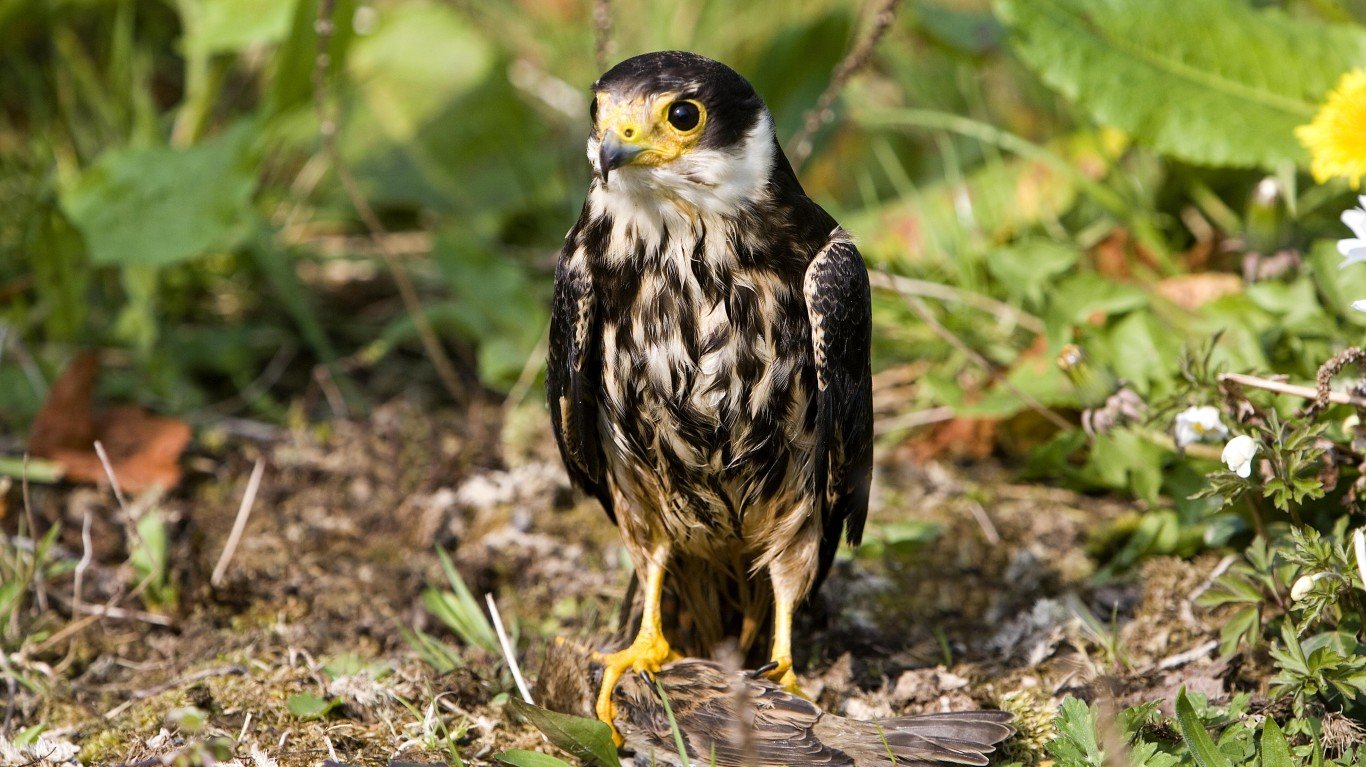
Eurasian hobby
> Speed: Up to 99 mph
> Primary location: Europe, Asia, Africa
>Red List extinction risk: Least concern
The Eurasian hobby, a small but swift falcon species, has a compact body and long, pointed wings. This agile predator primarily feeds on insects and small birds, catching them in mid-air with precision.

Crowned eagle
> Speed: Up to 100 mph
> Primary location: Sub-Saharan Africa
>Red List extinction risk: Near threatened
The crowned eagle, also known as the African crowned eagle, with its impressive size and strength, is known for being one of the largest and most powerful raptors in Africa. Its wingspan can reach up to six feet, and it possesses sharp talons and a strong beak. The crowned eagle is an apex predator, feeding on a variety of mammals, including monkeys and small antelope.
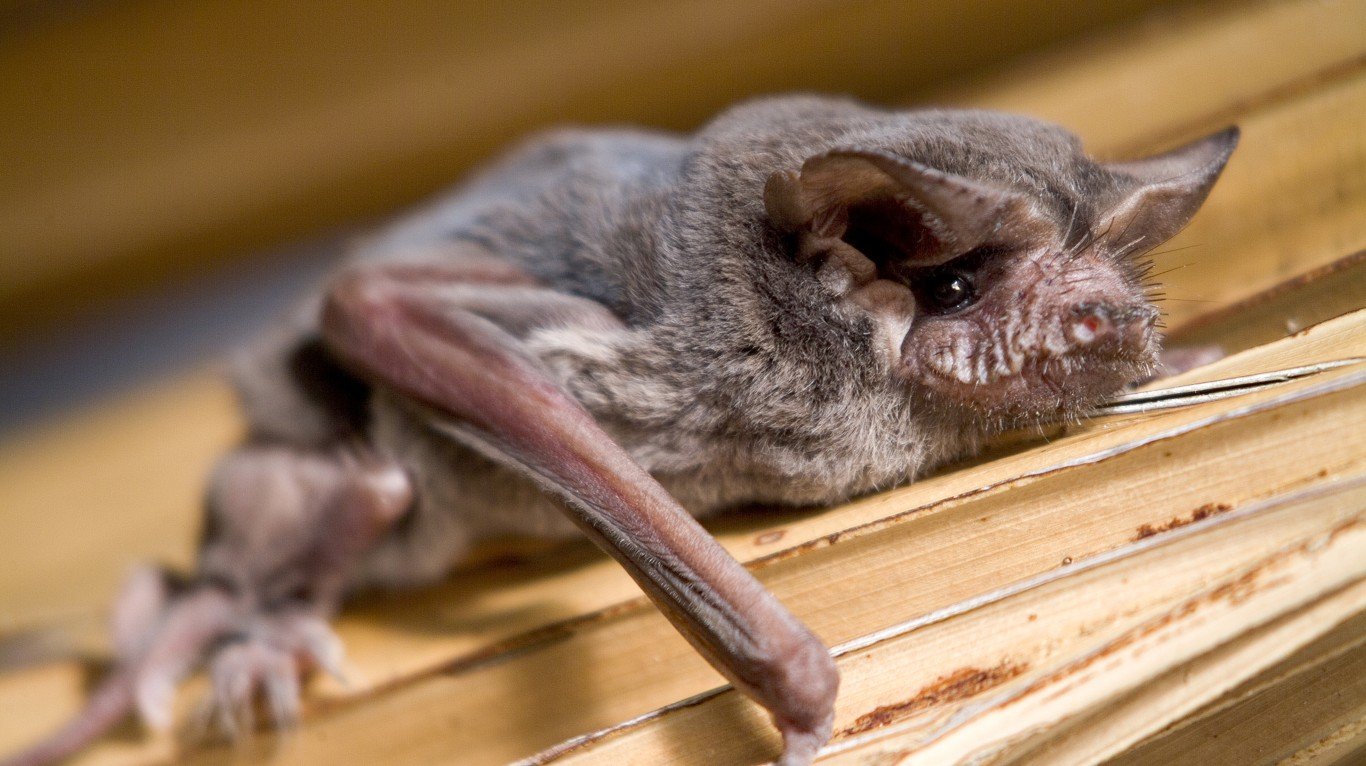
Brazilian free-tailed bat
> Speed: Up to 100 mph
> Primary location: Argentina and Chile, Central America, and the US, including Oregon and Ohio
>Red List extinction risk: Least concern
The Brazilian free-tailed bat is recognized for its impressive flight capabilities and high-speed aerial pursuits. With its streamlined body and elongated wings, it has been clocked at an astounding 100 miles per hour, making it the fastest-flying bat.
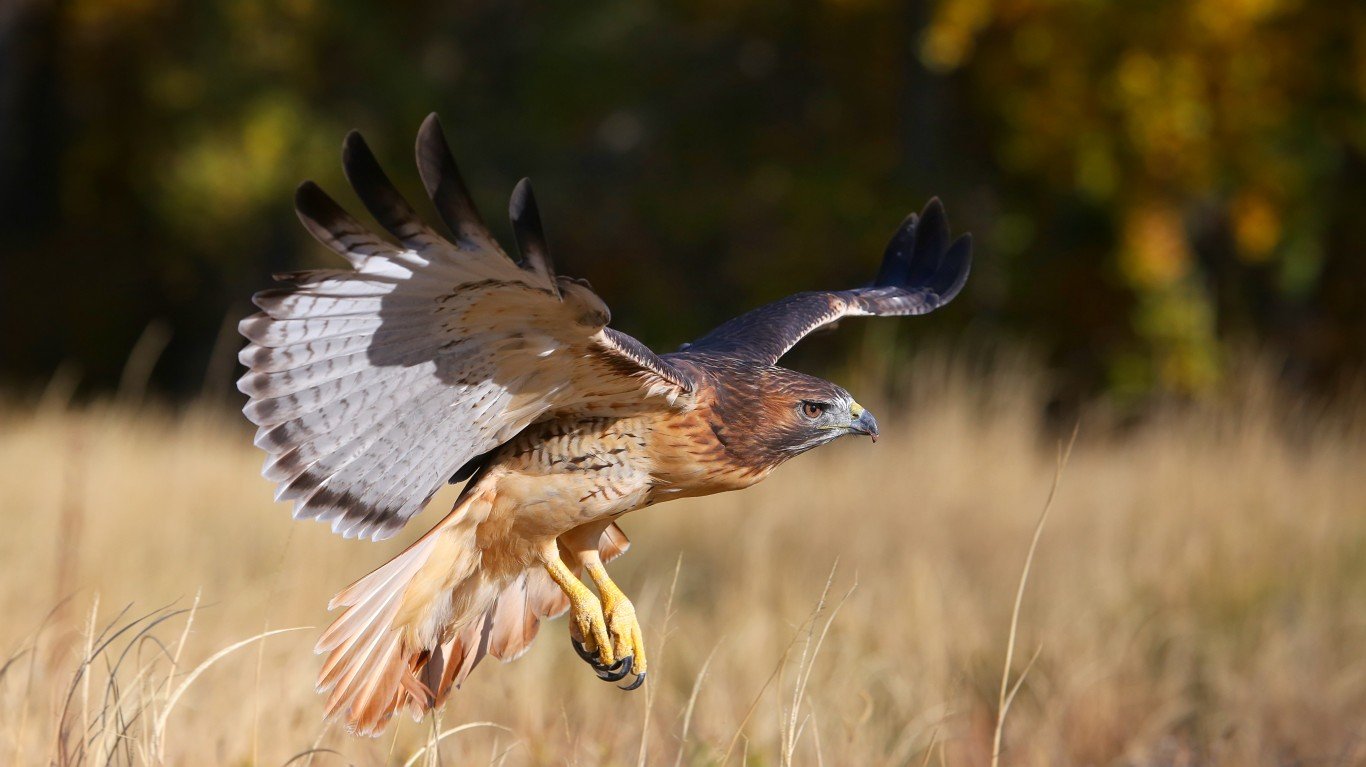
Red-tailed hawk
> Speed: Up to 121 mph
> Primary location: North America
>Red List extinction risk: Least concern
Although not as fast as some falcons, the red-tailed hawk exhibits impressive speed when in pursuit of prey. Its speed, coupled with its sharp vision and powerful talons, enables it to swiftly target small mammals, birds, and reptiles.
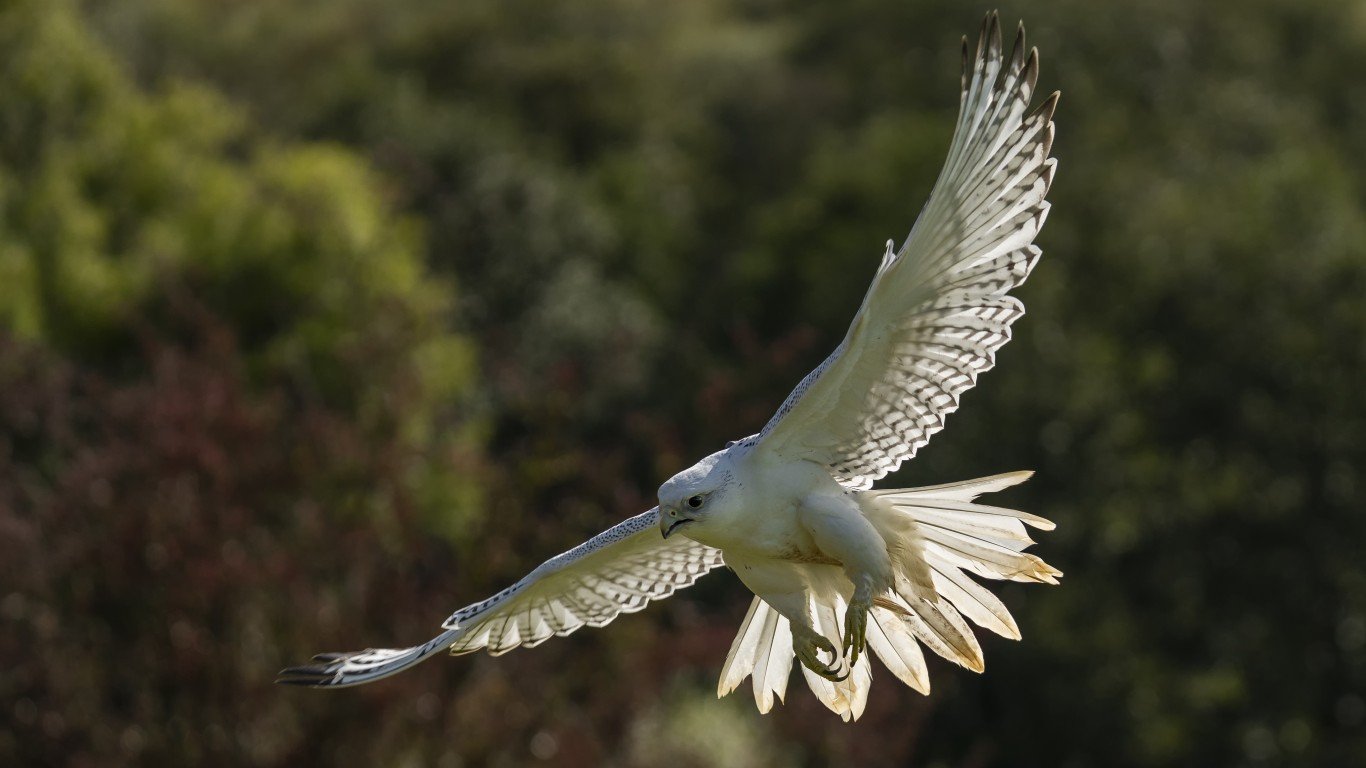
Gyrfalcon
> Speed: Up to 130 mph
> Primary location: Northern Hemisphere
>Red List extinction risk: Least concern
The gyrfalcon, a powerful bird of prey, is renowned for its impressive speed and aerial prowess. With its large wingspan and muscular build, it can reach incredible speeds during its hunting flights, making it one of the fastest birds in the falcon family. This speed, combined with its sharp talons and exceptional eyesight, makes the gyrfalcon a true master of the skies.
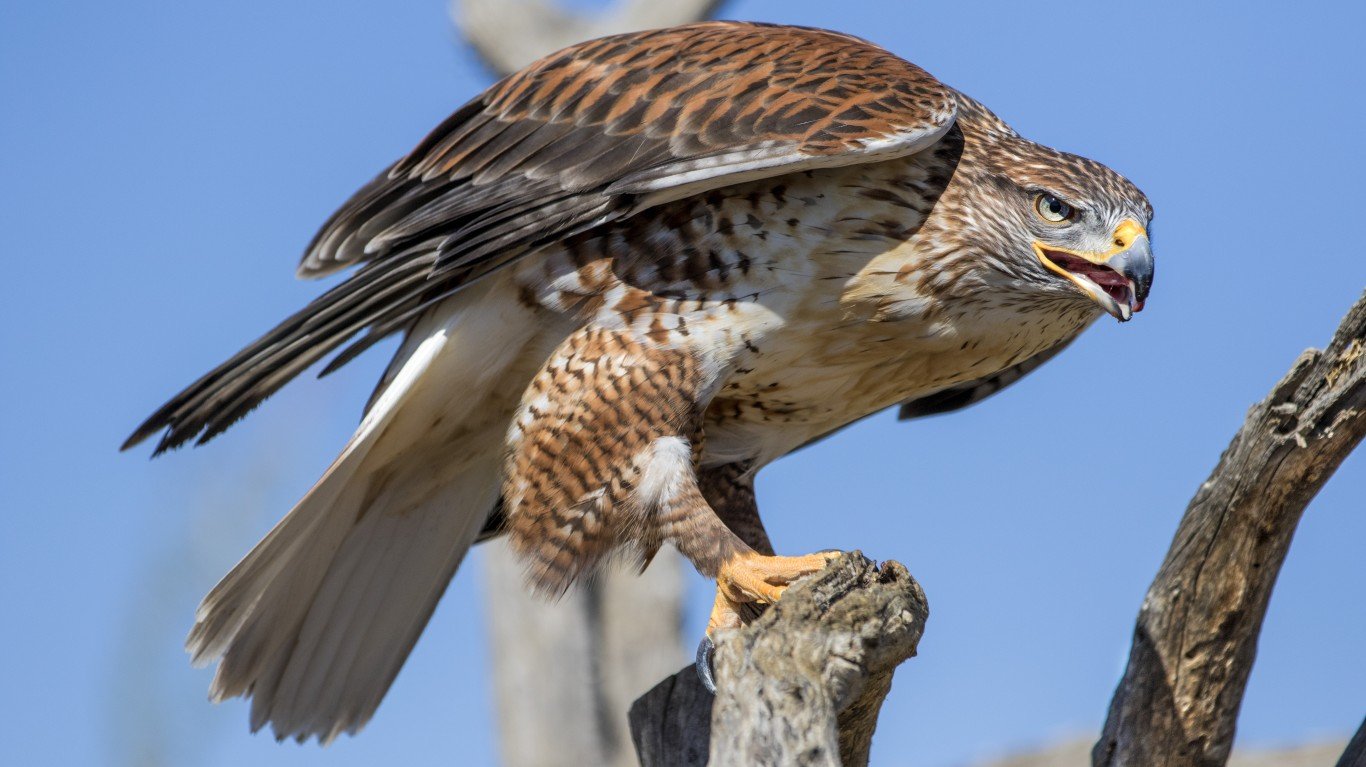
Ferruginous hawk
> Speed: Up to 150 mph
> Primary location: Western North America
>Red List extinction risk: Least concern
With its broad wingspan and powerful flight muscles, this bird exhibits remarkable agility while soaring through the sky, despite its larger size compared to other hawks. For prey, it targets small mammals and other birds.
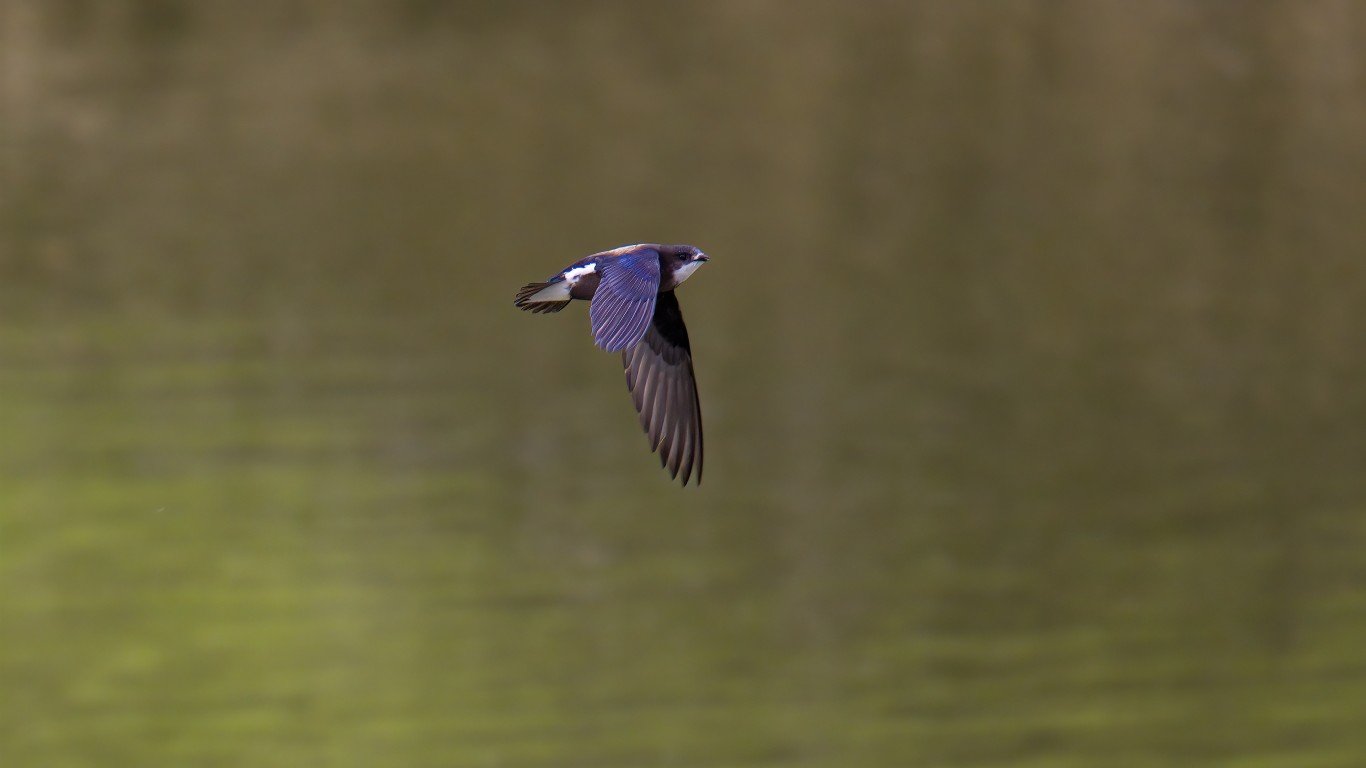
White-throated needletail swift
> Speed: Up to 200 mph
> Primary location: Asia, Australia
>Red List extinction risk: Least concern
The white-throated needletail swift, also known as the spine-tailed swift, is a remarkable bird, holding the title for being the fastest-flying bird in level flight, as opposed to diving for prey. It has a sleek, streamlined body and long, pointed wings.
Saker falcon
> Speed: Up to 200 mph
> Primary location: Northern Africa, southern and eastern Europe, Asia
>Red List extinction risk: Endangered
With its streamlined body and powerful wings, this avian hunter has an agility and quickness that allow it to effortlessly pursue and capture prey in mid-flight. Its name is redundant, as “saker” is an anglicized version of Ṣaqr, the word for “falcon” in Arabic.

Golden eagle
> Speed: Up to 200 mph
> Primary location: North America, Europe, Africa and Asia
>Red List extinction risk: Least concern
The most widely distributed eagle species, the golden eagle has long been highly prized in falconry for its large wingspan and a velocity that allows it to soar through the air with remarkable agility and precision, enabling it to quickly capture its prey.
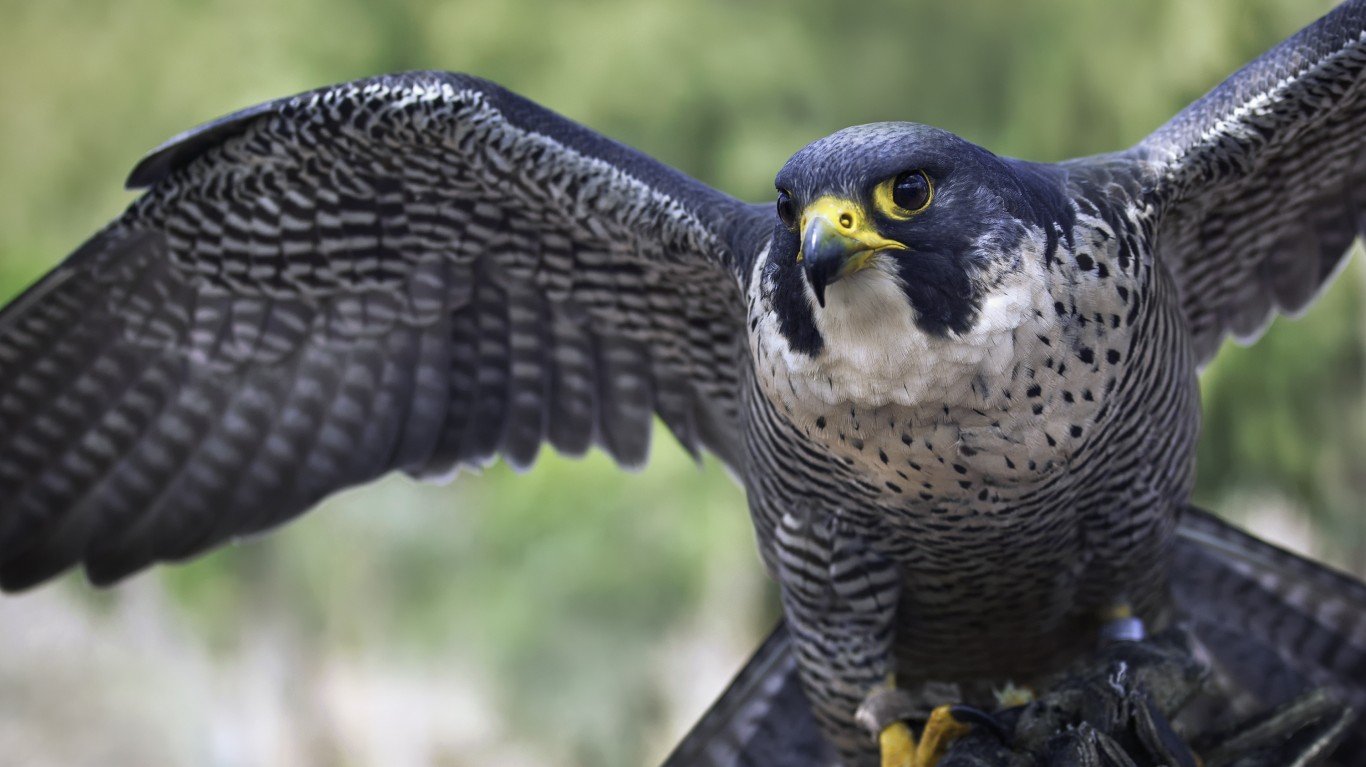
Peregrine falcon
> Speed: Up to 220 mph
> Primary location: Every continent except Antarctica
>Red List extinction risk: Least concern
With swift and precise aerial maneuvers, the peregrine falcon can reach staggering speeds during its high-speed dives, known as stoops, achieving an unparalleled velocity that allows it to chase down prey mid-flight.

